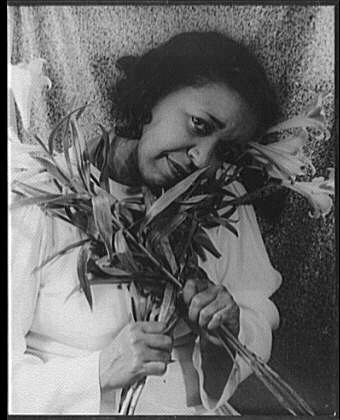The Beach Boys were the one band that could rival the commercial and artistic greatness of the Beatles during the Sixties. The two bands would become friendly rivals in that decade, trying to outdo each other in the studio by producing the most original and epic albums possible. This rivalry would produce the best works of both bands, including the Beach Boys classic, “Pet Sounds,” which is considered by many as the greatest pop/rock album of all time.
The Beach Boys were all native Californians and they would, in their early incarnation produce music which glorified the beachside lifestyle of surfing and hot rod racing particular to their home state.
The original Beach Boys lineup consisted of the Wilsonbrothers-Brian, Carl and Dennis, with cousin, Mike Love and friend, Al Jardine. Brian Wilson was the chief songwriter and creator of the Beach Boys image, while Dennis Wilson, the drummer and part-time surfer was the real life incarnation of that image.
They formed in Hawthorne,California in 1961 under the management and tutelage of Murray Wilson, father of the three Wilson brothers. Murray Wilson was a tough task master and ruled the band with an iron fist.
Originally called the Pendeltones, the band recorded their first single, “Surfin’,” for the Candix label in late 1961. When Candix released the single they changed the groups name to Beach Boys to make the band more marketable in the emerging surf music genre. The single became a modest nation-wide hit. Based on the success of the single, Murray Wilson was able to arrange a live appearance for the band at the Ritchie Valens Memorial Dance in Long Beach, California.
By summer 1962, the band had managed to get signed to Capitol records and released their first album, “Surfin’ Safari.”Starting with this album, the band found success, scoring a string of hits including, “Surfin’ Safari,” Surfing USA,” “Surfer Girl,” “409,” “Little Deuce Coupe,” “I Get Around,” and “Fun, Fun, Fun.” The band would record sixteen hit singles in total from 1962-1965, and they become huge pop stars in America and abroad.
Along with hit records came concert tours, and the stress of touring led to an emotional breakdown for Brian Wilson and his withdrawal from live performing. Future country music star, Glen Campbell, was brought in as a replacement for several months, and then Bruce Johnson. Brian Wilson, freed from his touring duties, started to focus on his songwriting and the possibilities of the studio and record production and would begin working on music which would soon be hailed as among the greatest pop music ever recorded.
By 1964, Brian Wilson’s more adventurous compositions demanded talented studio musicians for recordings. Two songs from this period, “Help Me Rhonda” and “I Get Around,” would become the band’s first two number one hits. In 1965, Brian Wilson would begin to experiment with song structure on the “Today” album, and score hits with the unorthodox songs,“California Girls” and “The Little Girl I Once Knew.” The revolutionary use of silence, keyboards and brass on the latter tune would set the stage for the band’s next phase, one free of beach imagery and more in step with the burgeoning hippie movement.
1966 would see the Beach Boys, led by Brian Wilson; fully embrace baroque rock with the classic album, “Pet Sounds,” and the seminal single, “Good Vibrations.” Brian Wilson would employ surreal songs, classical instrumentation and complex arrangements in the production of this music.
When Brian Wilson heard the Beatles’ album,“Rubber Soul,” in late 1965, he was so impressed that he dedicated himself to outdoing them. He was impressed that Rubber Soul broke the mold of containing a few hits only to be filled out by throwaway material. Rubber Soul did not contain any filler, just great original tunes. With Rubber Soul as his inspiration, Wilsonset off to the studio with the intention of making the greatest rock album of all-time. Many claim that he succeeded in doing just that, as the resulting album, “Pet Sounds” (1966), is widely hailed as one of the greatest-ever albums of pop music.
Pet Sounds was full of sounds previously unheard on rock records before it. It featured a slew of instruments manned by the finest studio musicians in Los Angeles, complex vocal and instrumental arrangements, and more sophisticated songs from Wilson. Wilson’s muse, apparently, was partially fueled by psychedelic drugs. The album contains what is perhaps the Beach Boys’finest ever tune, “God Only Knows,” which was a hit. Other hits on the album included “Wouldn’t It Be Nice,” “Sloop John B,” and “Caroline No.”
Wilson continued to experiment in 1966, producing the groundbreaking single, “Good Vibrations” and the legendary album, “Smile.” The lukewarm reaction of the public to Pet Sounds, drug use, and underlying mental health problems led to the Smile album being shelved by Capitol records. Some of the material appeared on the next Beach Boys release, “Smiley Smile.”
The Beach Boys would undergo several lineup changes and continue to produce music throughout the rest of the Sixties, Seventies and Eighties. Depending on the state of Brian Wilson’s mind, the Beach Boys’music varied from mediocre to brilliant. Among the brilliant moments were the albums, “Wild Honey” (1967), “Friends” (1968), “Surf’s Up” (1971), “Sunflower”(1970), and “Holland”(1973).
 |
| The Beach Boys on The Ed Sullivan Show-mid Sixties |















